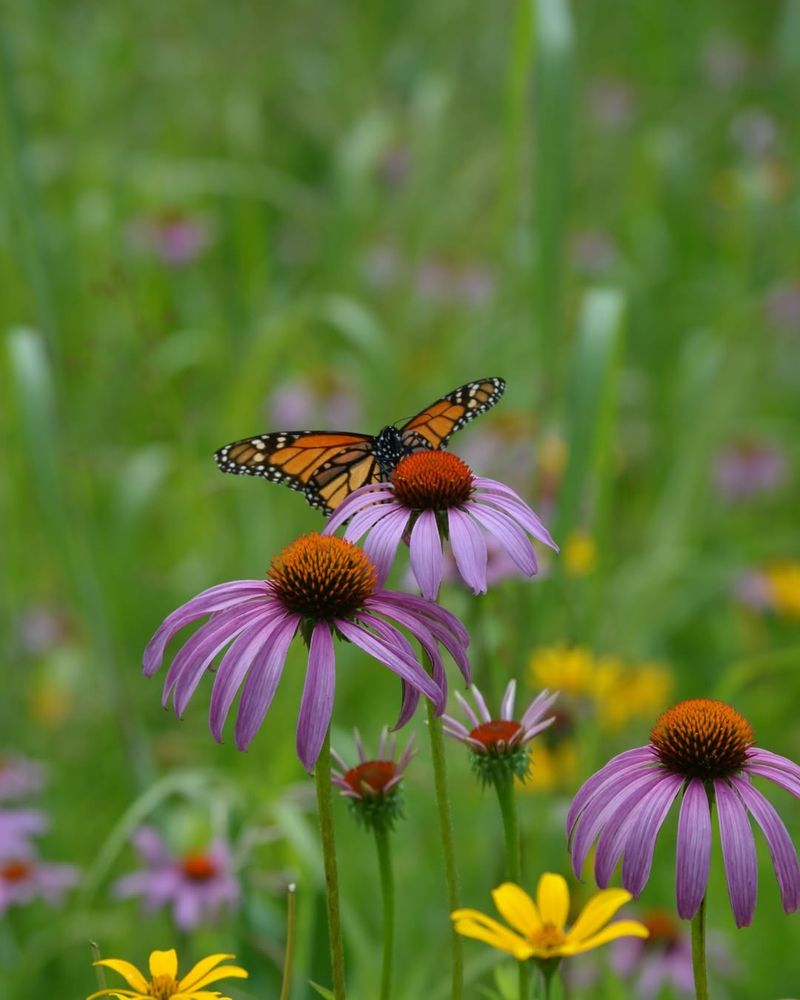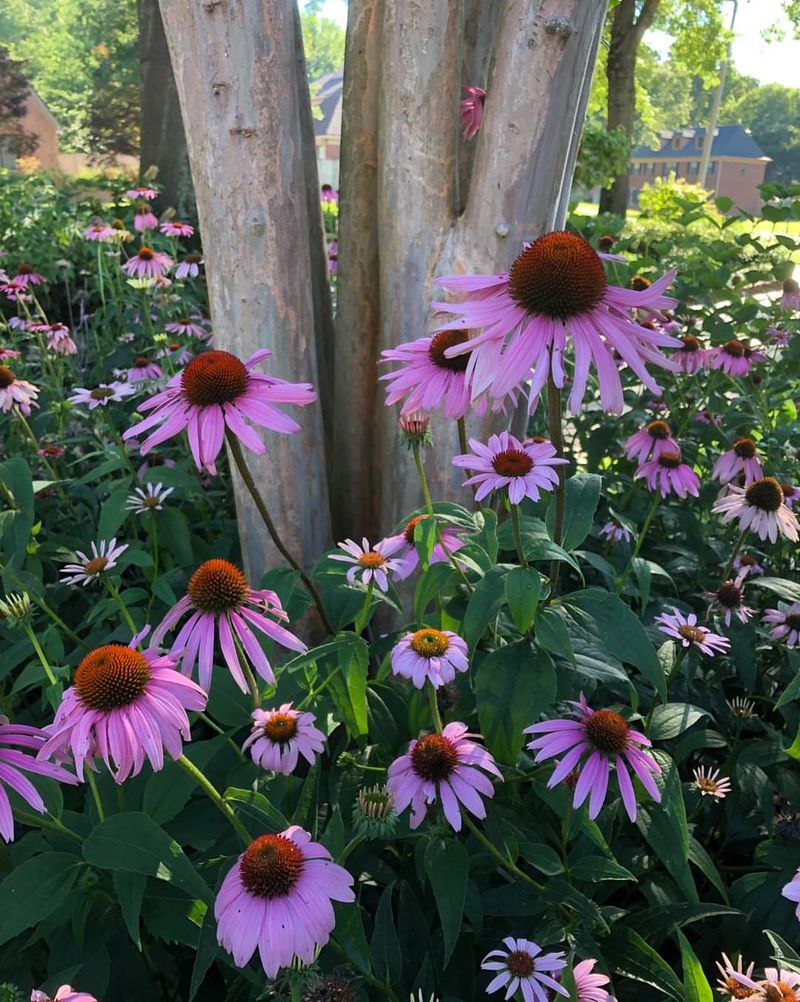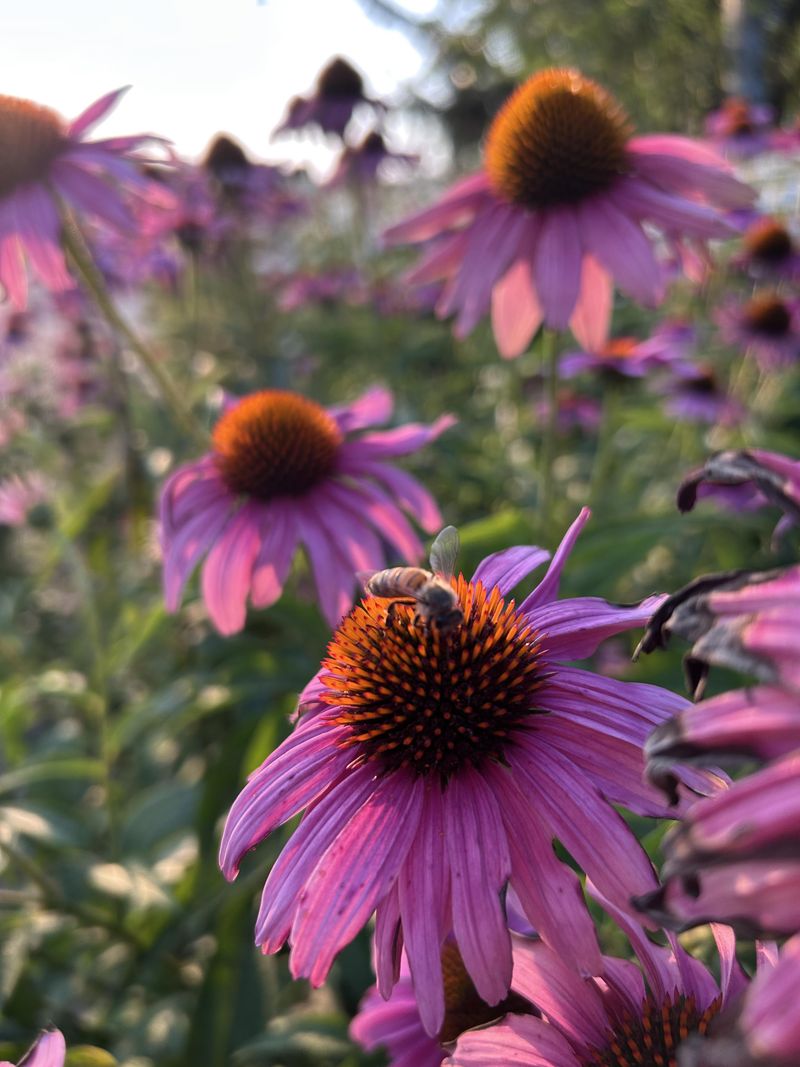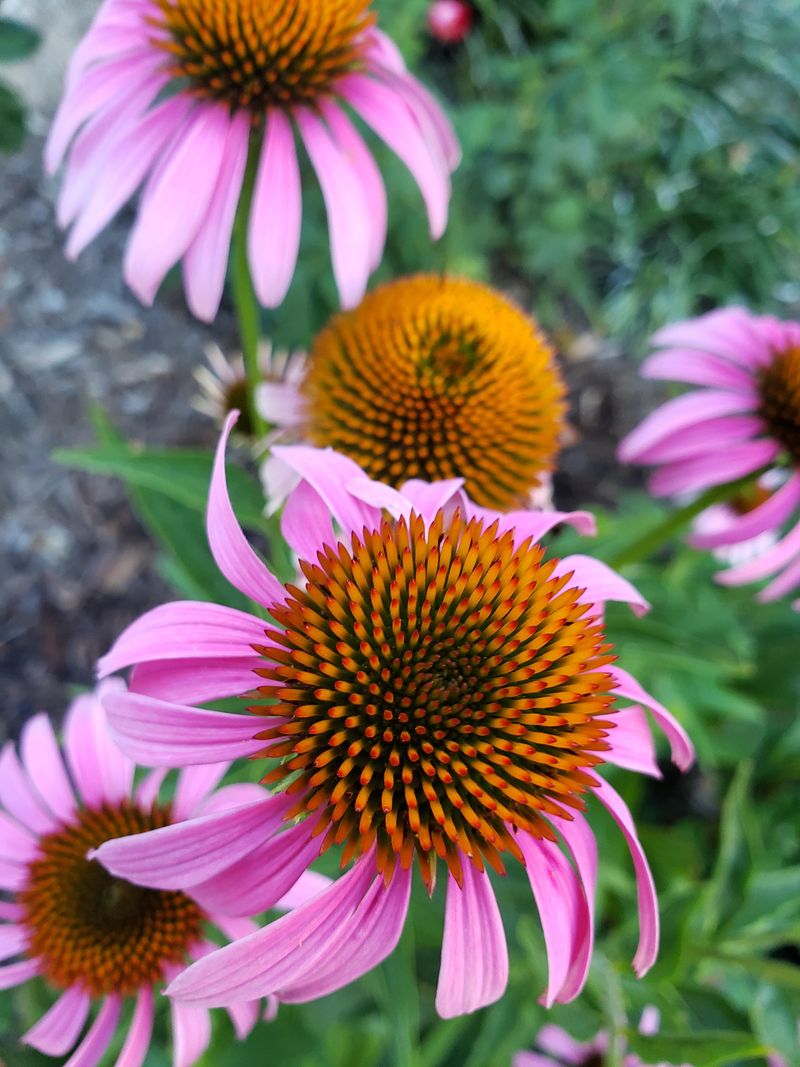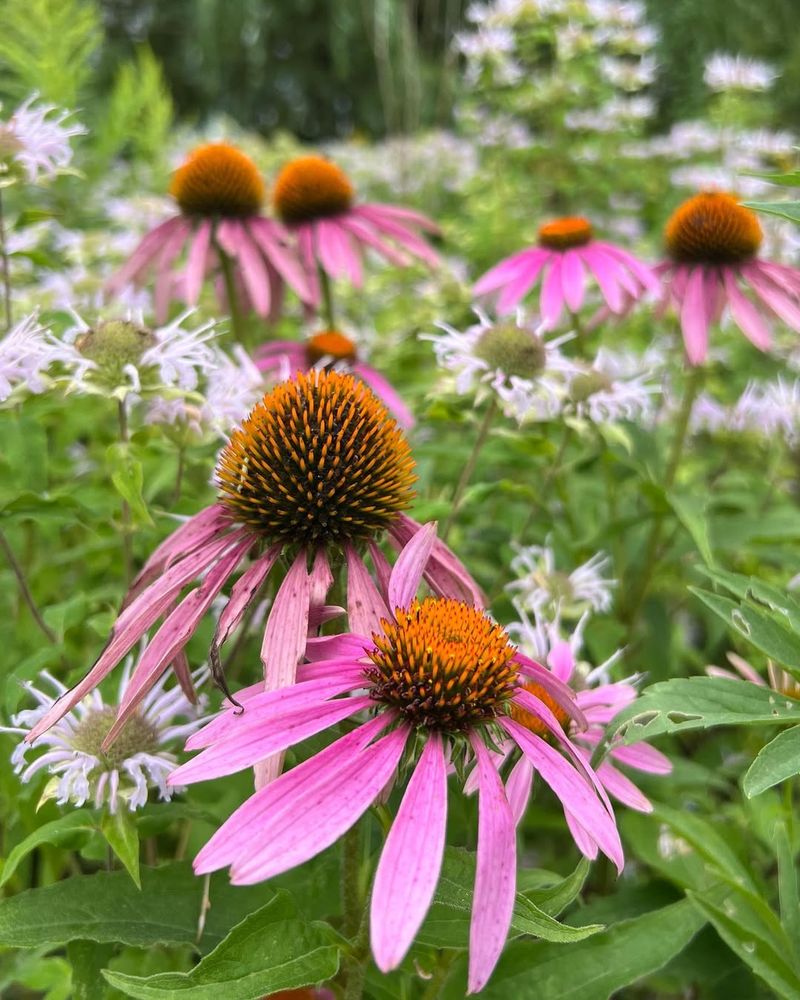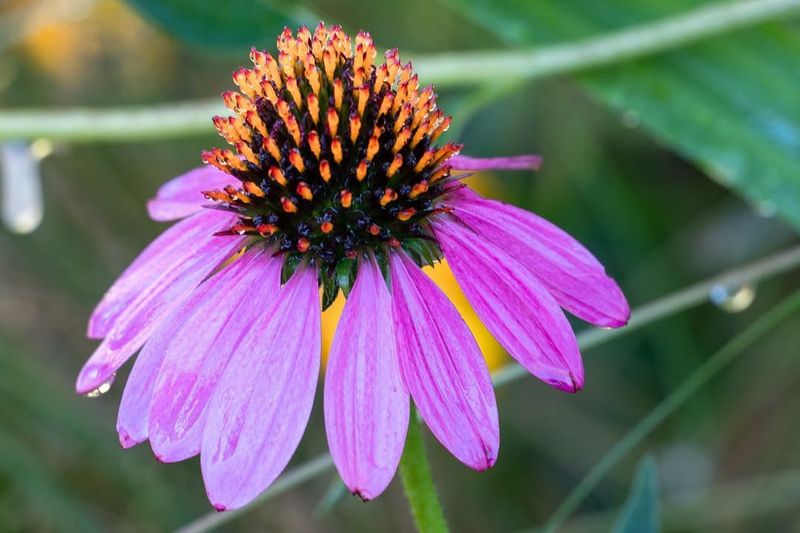Purple coneflowers are bee magnets in Indiana gardens, drawing in pollinators from spring to fall. Their bold blooms and steady nectar supply make them a favorite for buzzing visitors.
These hardy natives thrive in Hoosier summers, handling heat and dry spells without missing a beat. Once planted, they bloom for months with very little fuss. I’ve seen gardens come alive with butterflies, bees, and even songbirds thanks to coneflowers.
If you’re planting with pollinators in mind, this flower changes the game. Want help pairing purple coneflowers with other Indiana-friendly plants for a pollinator paradise?
1. Long Bloom Period Means Constant Nectar Supply
Purple coneflowers start opening their petals in early June and keep going until September arrives. That’s nearly four months of nonstop food for hungry bees in Indiana gardens.
Most flowers bloom for just a few weeks, but coneflowers keep producing fresh nectar throughout summer. Bees remember reliable food sources and return daily to plants they trust.
This extended blooming schedule helps bees survive the hot months when other plants have finished flowering.
2. Native Plant Status Equals Perfect Compatibility
Indiana’s native bees evolved alongside purple coneflowers for thousands of years. This long relationship means local pollinators instinctively recognize these flowers as trustworthy food sources.
Non-native plants sometimes produce nectar that doesn’t match what Hoosier bees need nutritionally. Purple coneflowers offer exactly the right sugar concentration and nutrients for species that call Indiana home.
Planting natives creates partnerships that benefit both the flowers and the insects visiting them daily.
3. Large Landing Platform Makes Access Easy
The raised center cone of a purple coneflower acts like a perfect landing pad for bees of all sizes. Bumblebees, honeybees, and even tiny sweat bees can grip the textured surface easily.
Some flowers have petals that are too delicate or openings too small for larger pollinators. Coneflowers solve this problem with their sturdy, accessible design.
Indiana gardeners notice more bee activity on coneflowers because every pollinator can reach the nectar without struggling or giving up.
4. Bright Color Acts As A Beacon
Bees see colors differently than humans do, and purple coneflowers practically glow in the ultraviolet spectrum that pollinators perceive. This makes them incredibly visible from far away.
When bees are foraging across Indiana neighborhoods, they spot these flowers before almost anything else in the garden. The pink-purple petals combined with the orange-brown center create a color combination bees find irresistible.
Think of it as putting up a neon sign that only bees can fully appreciate.
5. Drought Tolerance Keeps Flowers Productive
Summer dry spells hit Indiana gardens hard, causing many plants to stop blooming or wilt completely. Purple coneflowers have deep taproots that reach moisture other plants can’t access.
When everything else looks stressed and stops making nectar, coneflowers keep their flowers fresh and productive. Bees depend on this reliability, especially during hot July and August weeks.
Hoosier gardeners appreciate not having to water constantly while still providing consistent food for pollinators throughout the growing season.
6. Multiple Flowers Per Plant Increase Efficiency
A mature purple coneflower doesn’t produce just one bloom—it sends up dozens of flower stalks throughout the season. Bees can visit multiple flowers without flying to a different plant.
This clustering saves energy for pollinators, making coneflowers more attractive than scattered single blooms. Indiana bees work smarter when they can harvest from several flowers in one stop.
Gardeners who plant coneflowers essentially create buffet stations where bees can fill up quickly and efficiently before moving along their route.
7. Seed Heads Provide Late-Season Bonus
After the petals drop, purple coneflower seed heads continue attracting bees searching for leftover pollen and nectar. The spiky cones stay interesting to pollinators even as they dry.
Many Indiana gardeners cut spent flowers off too quickly, but leaving coneflower heads intact extends the season. Late-summer and early-fall bees still find something valuable on these aging blooms.
This double-duty feature means your coneflowers work harder and longer than most other flowering plants in the garden.
8. No Pesticide Treatments Needed
Purple coneflowers rarely suffer from serious pest problems, so Indiana gardeners don’t need to spray chemicals that could harm visiting bees. This creates a safe feeding zone for pollinators.
Many garden flowers require regular treatments that leave residue on petals and nectar. Coneflowers naturally resist most issues, keeping their blooms clean and safe.
Bees gravitate toward plants they can trust, and coneflowers earn that trust by offering pure, uncontaminated food sources throughout the entire blooming period.
9. Easy To Grow Means More Plants For Bees
Purple coneflowers thrive in Indiana’s clay soil and tolerate both sun and partial shade. This adaptability means more gardeners successfully grow them, creating widespread bee habitat across neighborhoods.
When plants are fussy, fewer people plant them. Coneflowers spread through gardens because they’re forgiving and reliable for beginners and experts alike.
More coneflowers planted throughout Indiana means more feeding stations for bees, creating connected corridors that support healthy pollinator populations across entire communities and regions.


